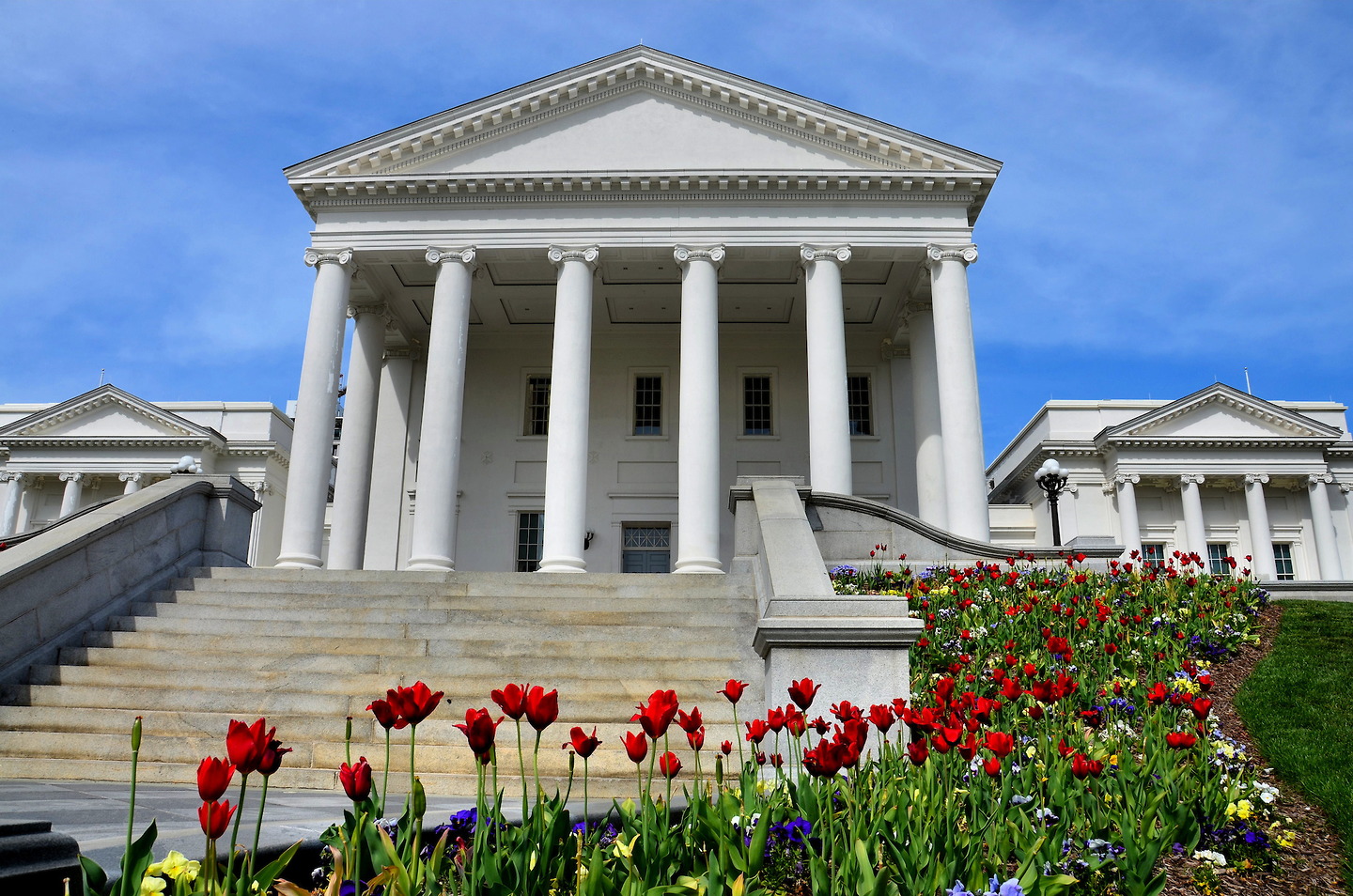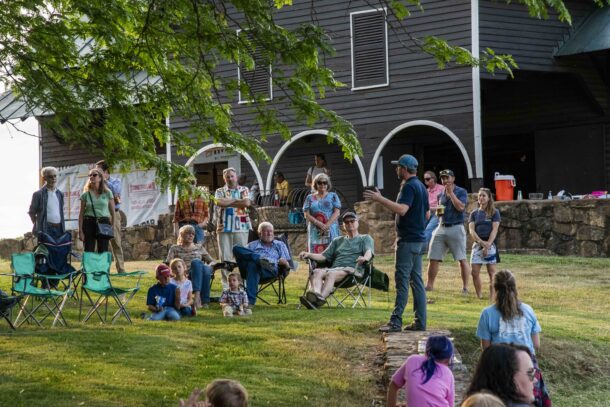Join us as a strong voice for the Rappahannock River at the state level.
The 2023 General Assembly session starts January 11th. We are prioritizing these issues and will regularly update this page. We will include info on bill progress and how you can make a difference for the river. Your voices are vital!
To find who your representatives are, go to Who is My Legislator?

Environmental Literacy
River Issue: Many schools, especially those that are traditionally under-represented and underserved, struggle to incorporate environmental education as a regular and meaningful part of their curriculum. Many teachers are ill-prepared to lead lessons about the environment. This is partially because they were not necessarily taught about the environment when they were in school, and there is not a significant focus on this topic in teacher preparatory programs.
In order to prepare our classroom teachers and teachers-in-training to effectively teach the environmental literacy concepts already woven into the Virginia Standards of Learning, there is a need to offer a quality program to ensure competency in environmental education. Virginia Association for Environmental Education (VAEE) offers a certificate program that is aligned with the North American Association for Environmental Education’s standards. Although this program was developed with input from the Virginia Department of Education, there is no formal incentive for teachers to complete this or other pre-service environmental education learning opportunities. FOR supports investigating incentives for teachers to complete the certification, including adding an endorsement to their licensure, providing scholarship funds to pay for the costs of the certificate, and providing a pay scale increase upon successful completion.
Budget and Policy Recommendations
- Create a study through the Department of Conservation and Recreation, Department of Education, and the State Council of Higher Education for Virginia to look at all the possibilities for incentivizing teacher engagement in Virginia-centric environmental education certifications, including the VAEE certificate program.
- Continued support for $250,000 in funds from the Governor’s budget for competitive grants to provide Chesapeake Bay meaningful watershed educational experiences (MWEE).
Resilient Communities and Ecosystems
-
iver Issues: Virginians are on the frontlines of climate change. Coastal Virginia faces the highest rate of relative sea-level rise on the East Coast. Rainfall intensity is also increasing, threatening coastal, inland, and riverine communities. This places Virginia’s residents at risk and threatens the future of our coastal wetlands and shorelines. Sea level rise and increasing water temperatures threaten to set back decades-long investment in Virginia’s Chesapeake Bay and vital coastal ecosystems including the commitment to “no net loss” of wetlands. The chronically underserved and under-resourced communities least able to adapt, plan, and invest in preparedness and protection face the greatest risks from climate change while simultaneously facing compound threats of discrimination.
Budget and Policy Recommendations:
- Maintain Virginia’s participation in the Regional Greenhouse Gas Initiative (RGGI) and ensure that 45% of revenues generated from RGGI continue to be allocated to the CommunityFlood Preparedness Fund.
- Identify additional consistent, long-term, and dedicated funding – with transparent oversight of expenditures and cross-agency coordination – to address flood risk and advance flood resilience.
- Incorporate climate change in long-term planning, such as comprehensive plans
- Increase staff capacity at the Shoreline Erosion Advisory Service
Stormwater Runoff and Agricultural BMP Water Quality Programs
River Issue: Stormwater runoff from urban and suburban areas is the fastest growing source of pollution to our water and the main reason many of our urban streams are impaired. This growth is largely caused by the expansion of our built environment and the impervious surfaces — parking lots, roofs, and roads — that carry more polluted runoff to our waterways. With more intense rain- fall events on the horizon as a result of climate change, untreated stormwater may exacerbate dangerous and costly flooding. Virginia’s plan to clean up the Chesapeake Bay calls for strong investments in better stormwater control to protect clean water and frontline communities.
Agriculture is Virginia’s largest industry by many metrics. It also represents the largest
source of nutrient and sediment pollution reaching Virginia’s local streams, rivers, and the Chesapeake Bay. Fortunately, this source of pollution is declining thanks to increased investments in agricultural best management practices that improve water quality. The Virginia Agricultural Cost Share Program (VACS) funds the implementation of a wide suite of agricultural practices that reduce pollution while enhancing farm productivity. Virginia should follow through on its commitment to fully fund this impactful program.
Budget & Policy Recommendations:
- Support for at least $80 million in funds per year to the Stormwater Local Assistance Fund (SLAF)
- Continued support for the $4 million in funds ($2 million each year) allocated to the Virginia Conservation Assistance Program (VCAP). This program provides cost-share assistance for smaller-scale residential and commercial projects to improve drainage and reduce erosion such as rain gardens, conservation landscaping, and permeable driveways.
- Support for full funding for Virginia Agricultural Cost-Share (VACS) Program as estimated by the Agricultural Needs Assessment and accounting for impacts related to inflation
- Support for sufficient and stable funding for technical assistance by Soil and Water Conservation Districts to ensure adequate staff capacity and training.
Fisheries
-
River Issue: The native oyster (Crassostrea virginica) is one of the Chesapeake Bay’s keystone species and of great ecological, economical, and historical importance in the Commonwealth. The Chesapeake (meaning “great shellfish bay’’in Algonquin) Bay once boasted oyster reefs so expansive they posed navigation hazards to explorers and watermen. Today, oyster populations in the Chesapeake Bay and its tributaries remain a fraction of their historical numbers. Overfishing, disease, and pollution have all taken their toll on this keystone species. As oyster restoration efforts increase to meet WIP III goals, the available supply of shell has dwindled while the cost per bushel has increased. This has created logistical problems in finding enough shells to complete projects.
Blue catfish are an invasive fish that was introduced to rivers in Virginia beginning in the 1970’s. The voracious predators have been found to make up up to 75% of all biomass in certain parts of the Rappahannock River. They can get up to over 100lbs in size and feed on iconic depleted species such as blue crabs, American Shad, and river herring. Despite their abundance and deleterious effect on the River they are not able to be harvested and sold at high enough levels due tounfair inspection requirements that dampen their market.
Budget and Policy Recommendations:
- Maximize the reuse of the state’s oyster shell resource by creating economic incentives for shell recycling and reducing the disposal of oyster shells in landfills.
- Expedited permitting for alternative substrates for use in oyster restoration projects.
- Support legislation that helps increase the market for blue catfish until inspections regulations can be changed in the federal 2023 Farm Bill
Urban Forestry & Canopy Project
River Issues: The Chesapeake Bay watershed portions of Virginia replaced 184,665 acres of forest with other land uses between 2014 and 2018; approximately 72 square miles of canopy were lost each year at a time when tree canopy is critically needed to capture stormwater, reduce flooding, create more heat resilient communities, sequester carbon, and lower energy consumption to mitigate the impacts of climate change. Localities, many of which have adopted tree canopy goals of 40% or higher, currently don’t have the authority to offset tree loss
Budget and Policy Recommendations:
- Reenact SB537, which would provide additional authority to localities to replace lost canopy.
- Support for $4 million per year for Virginia Department of Forestry Trees for Clean Water and $3 million per year for Urban and Community Forestry grants, with 25% of funds prioritized for low-income communities.
We will regularly update this page to provide you information on bill progress and how you can make a difference for the river. Your voices are vital!

